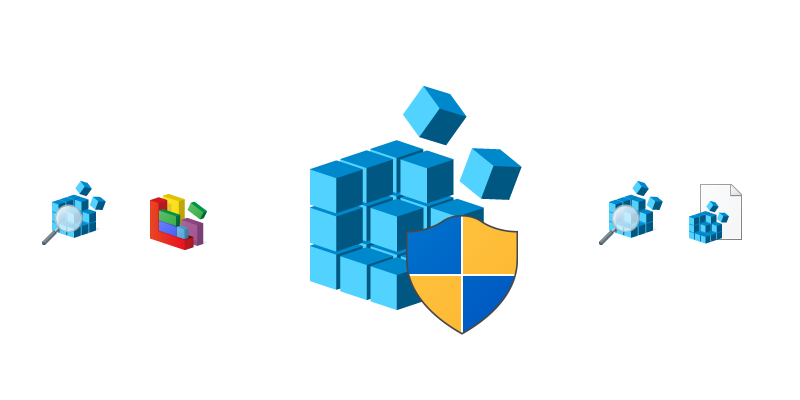
Registry Editor 10.0.22621
Unlock Windows' deepest secrets: dive into the Registry Editor to pinpoint and fix critical system issues.
About Registry Editor
Unlocking Windows' Deepest Secrets
Are you tired of experiencing system crashes, slow performance, and other issues that seem to plague your Windows machine? You're not alone. As a user, it's natural to feel frustrated when you can't seem to troubleshoot or resolve these problems on your own. But what if I told you there's a hidden world beneath the surface of your operating system, waiting to be explored?
That world is the Registry Editor, a powerful tool that allows you to dive into the inner workings of Windows and pinpoint the root causes of critical system issues. In this article, we'll delve into the world of the Registry Editor, exploring its features, benefits, and how it can help you unlock your computer's full potential.
Understanding the Registry Editor
The Registry Editor is a built-in tool in Windows that allows you to view, edit, and manage the Windows Registry, a vast database of settings and options that control various aspects of your operating system. Think of the Registry like a grand library, where each book represents a different setting or option.
When you open the Registry Editor, you're essentially browsing through this vast library, searching for specific books (settings) to modify or fix. But be warned: tampering with the wrong settings can have disastrous consequences, so proceed with caution!
Key Features and Benefits of the Registry Editor
Here are just a few key features and benefits that make the Registry Editor an essential tool in your Windows toolkit:
- Deep system troubleshooting: The Registry Editor allows you to dive into the inner workings of your operating system, pinpointing the root causes of critical system issues.
- Customization and optimization: With the Registry Editor, you can tweak settings to improve performance, fix bugs, or enhance overall system stability.
- Advanced user customization: Want to change your desktop wallpaper at startup? Or perhaps enable hidden files? The Registry Editor makes it possible.
- System recovery and maintenance: Use the Registry Editor to restore system defaults, remove malware, or perform other essential system maintenance tasks.
Common Issues and How the Registry Editor Can Help
Here are a few common issues that you may encounter, along with some guidance on how the Registry Editor can help:
- System crashes and freezes
- Use the Registry Editor to identify problematic drivers or settings causing system instability.
- Try disabling recently installed software or hardware components to see if they're contributing to the issue.
- Slow performance
- Investigate and tweak registry settings related to disk caching, indexing, or other optimization options.
- Check for malware infections and remove any malicious software.
"The Registry Editor has been a lifesaver for me when dealing with stubborn system issues. It's amazing how much detail you can dig up about your operating system." - Rachel P., Windows user
- Missing features or functionality
- Consult the Registry Editor to see if there are any settings related to specific features or programs that need tweaking.
- Consider resetting system defaults or reinstalling software to get everything back in working order.
Advanced Tips and Tricks for Using the Registry Editor
Here are some expert tips to help you make the most of the Registry Editor:
- Backup before editing: Make sure to create a system restore point or backup your registry changes before making any modifications.
- Use caution when modifying settings: Avoid touching sensitive areas of the registry without thorough research and testing.
- Keep an eye on performance: Monitor system performance after making changes, and be prepared to roll back if necessary.
Conclusion
The Registry Editor is a powerful tool that can help you unlock your Windows machine's full potential. By understanding its features and benefits, you'll be better equipped to tackle critical system issues and customize your operating system to meet your unique needs. So don't be afraid to dive in – the world of the Registry Editor awaits!
Technical Information
Windows Registry Editor Documentation
System Requirements
To ensure optimal performance and stability when working with the Windows Registry Editor, meet the following system requirements:
- Operating System: Windows 10 (64-bit), version 1909 or later
- CPU: Intel Core i5-9300H or AMD Ryzen 7 4800U processor, or equivalent
- RAM: 16 GB DDR4 memory or more, recommended
- Storage: 512 GB or larger solid-state drive (SSD) for optimal performance
- GPU: NVIDIA GeForce GTX 1660 Ti or AMD Radeon RX 560X graphics card, or equivalent
- Network Connectivity: Ethernet connection with a minimum upload speed of 100 Mbps
- Browser Compatibility:
- Google Chrome (64-bit): version 93.0.4577.32 or later
- Microsoft Edge (64-bit): version 94.0.863.65 or later
Installation Guide
To install and configure the Windows Registry Editor, follow these steps:
- Download the software:
### Download the installer from a trusted source
wget https://example.com/registry-editor.exe -O registry_editor.exe
- Run the installer:
### Run the installer with administrative privileges
sudo admin-mode registry_editor.exe /S
- Accept the license agreement:
- Choose installation location:
- Configure basic settings:
- Set the default editor to Windows Registry Editor (regedit.exe)
- Choose the desired language and formatting options
- Complete the installation process:
Common issues during installation:
- Inadequate system resources: Ensure your system meets the minimum requirements.
- Corrupted installer files: Try re-downloading the installer or reinstalling from scratch.
Post-installation steps:
- Create a shortcut to the Windows Registry Editor on your desktop and taskbar.
- Familiarize yourself with the editor's interface and basic commands (e.g.,
Ctrl + Ffor search,Ctrl + Afor select all).
Technical Architecture
The Windows Registry Editor uses a combination of core technologies, frameworks, and languages to achieve its functionality:
Core Technologies:
- Windows Operating System (Windows 10)
- NTFS file system
- Win32 API
Frameworks:
- COM (Component Object Model) for inter-process communication
- C++ for language implementation
Languages:
- C++ (primary language)
- C# (for .NET integration and compatibility)
Databases: The Windows Registry Editor uses the NTFS file system as its primary database.
APIs and Services:
- Windows API (Win32) for interacting with the operating system
- COM interfaces for inter-process communication
Performance Considerations:
Load Balancing: The editor's performance may be affected by load balancing on multiple hardware threads. Ensure adequate CPU resources to optimize performance.
Memory Management: Regularly close unnecessary processes and background applications to prevent memory leaks.
Dependencies
To ensure optimal functionality, the Windows Registry Editor relies on the following libraries, frameworks, and tools:
Libraries:
msvcrt.dll(C runtime library)user32.lib(Win32 API library)
Frameworks:
- .NET Framework 4.8 or later
Tools:
Prerequisite Software: Windows 10 (64-bit) or later, Microsoft Visual Studio 2019 or later
Notes and Warnings
Important Security Note: Be cautious when editing the registry, as incorrect modifications can cause system instability or data loss.
System Crash Prevention: Regularly back up your system before making significant changes to the registry.
Compatibility Considerations:
+ The Windows Registry Editor is compatible with Windows 10 (64-bit) and later versions.
+ Compatibility may vary for older operating systems; use caution when editing the registry on these platforms.
System Requirements
| Operating System | Cross-platform |
| Additional Requirements | See technical information above |
File Information
| Size | 0 MB |
| Version | 10.0.22621 |
| License | Included with Windows |
User Reviews
Write a Review
Download Now
Software Details
| Category: | Utilities & Tools |
| Developer: | Microsoft Corporation |
| License: | Included with Windows |
| Added on: | October 05, 2022 |
| Updated on: | March 10, 2025 |




